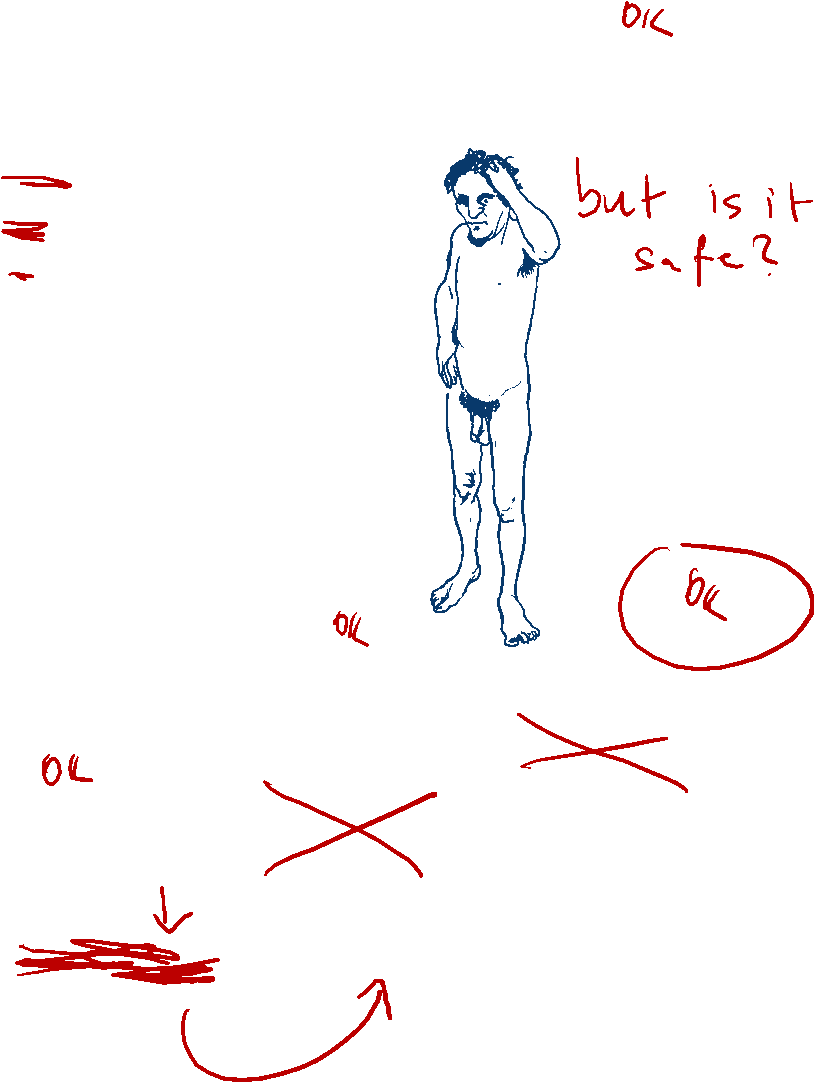What we covered here
• The Federal Reserve cut its benchmark interest rate Wednesday for the first time since December and signaled more cuts are likely this year.
• Central bankers opted for a quarter-point cut this time around, matching expectations on Wall Street. Stocks initially moved higher on the news, before falling into the red across all three major indexes.
• President Donald Trump has been pushing for the central bank to reduce borrowing costs in order to juice economic growth, but the Fed said its decision was based on the need to support a weakening job market.
Our live coverage of the September Fed decision has ended. Read more here.
Trump said housing will "soar" after rate cuts. Here's what the experts have to say

Will the Federal Reserve’s quarter-point rate cut help housing become more affordable? Experts, ranging from economists to mortgage lenders, have mixed views. Here are some of their instant reactions to Wednesday’s rate cut and Fed Chair Jerome Powell’s comments:
Chen Zhao, Redfin head of economic research: “Rates will remain mostly steady after the Fed executed the already priced-in 25 bps cut and painted a muddy picture in their projection for future rate cuts.”
Lisa Sturtevant, Bright MLS chief economist: “There are still risks of a reversal in mortgage rates, despite the Fed’s rate cut today and even if they cut rates two more times this year… While lower rates will bring some buyers and sellers into the market, today’s cut will not be enough to break up the housing market logjam.”
Bill Banfield, Rocket Mortgage chief business officer: “Mortgage rates may stay relatively flat in the short term since markets had already priced in this cut. However, consumers could benefit from lower short-term rates, making adjustable-rate mortgages – which closely follow the Fed’s moves – more attractive.”
Jeffrey Ruben, WSFS Bank president of home lending: “Today’s borrowers should be focused on affordability at current levels, rather than constantly waiting for rate drops.”
Greg Schwartz, Tomo Mortgage CEO: “We have a signal that the Fed is willing to roll up their sleeves and support the economy. Unfortunately, for home buyers that means we will see a lot of volatility with rates, as the Fed has a tough job ahead of it.”
Markets end the day mixed after Fed's first rate cut since December

US stocks closed mixed on Wednesday after the Federal Reserve delivered a long-awaited cut to its benchmark interest rate.
The Dow closed higher by 260 points, or 0.57%. Meanwhile, the broader S&P 500 edged lower by 0.1% and the tech-heavy Nasdaq Composite fell 0.33%.
The stock market had rallied in recent weeks on expectations for a Fed rate cut, but the result wasn’t enough to cause a major move in stocks.
About 460 companies in the S&P 500 rose on Wednesday, but the index was weighed down by losses in big tech companies like Nvidia (NVDA) and Broadcom (AVGO), which sank 2.67% and 3.84%, respectively.
Federal Reserve Chair Jerome Powell said in a press conference that the interest rate cut could be thought of as a “risk-management cut.”
“What’s different now is that you see a very different picture of the risks to the labor market,” Powell said.
“The labor market is getting a little bit weaker, and so they thought it was appropriate to cut rates, but they’re not going to cut rates fast, because they recognize that there is also an inflation problem out there,” David Kelly, chief global strategist at JPMorgan Asset Management, told CNN.
It was reassuring to see only one dissent from the policy decision, as it reaffirmed the image of a balanced and independent Fed, Kelly said.
“The fact that the Federal Reserve is taking its time, it’s being balanced and measured in how it adjusts its rates, I think that that gives confidence to investors all around the world,” he said.
The US dollar index briefly dropped as much as 0.4% after the decision before erasing losses and gaining 0.3% after Powell’s press conference.
Treasury yields initially dipped lower before rising as Powell highlighted inflation risks.
Miss our chat?
Catch up on our live discussion from the announcement.
Housing shortage is a "deeper problem" the Fed can't directly address, Powell says

Federal Reserve Chair Jerome Powell weighed in Wednesday on whether the central bank’s latest rate cut will ease housing affordability challenges, cautioning that some of the housing market’s issues are too big for the Fed to fix.
“We don’t set mortgage rates, but our policy rate changes do tend to affect mortgage rates,” Powell said, adding that lower mortgage rates will help raise demand for homes on the market and allow builders to more easily borrow money to build more homes.
Mortgage rates track the 10-year Treasury yield, which often follows Fed policy moves, though it sometimes diverges.
Last week, ahead of Wednesday’s policy decision, the average 30-year fixed mortgage rate fell to 6.35%, according to Freddie Mac. That’s the lowest it’s been so far this year.
Powell pointed out that a steep shortage of homes for sale has also driven prices higher, and that it’s not a problem the Fed can easily repair.
“There’s a deeper problem here, that’s not a cyclical problem that the Fed can address, and that is just a pretty much nationwide housing shortage,” Powell said.
“A lot of places in the country just don’t have enough housing for people, and all of the areas around, metropolitan areas like Washington, for example, are very built up, and so you’re having to build farther and farther out,” he added.
Stocks are on a rollercoaster as investors assess Fed rate decision and forecast

Stocks bounced around Wednesday afternoon as investors tried to discern the Federal Reserve’s view of a potential rate-cutting cycle.
The Dow was up 260 points, or 0.56%, after briefly turning into the red.
Meanwhile, the S&P 500 was flat and the tech-heavy Nasdaq was down 0.2%, paring earlier losses.
The Fed cut interest rates by a quarter point, as expected.
“We view this as bullish-dovish, even though it stems from concerns on the labor side,” Krishna Guha, vice chairman at Evercore ISI, said in a note.
“In the near term, risks to inflation are tilted to the upside and risks to employment to the downside — a challenging situation,” Federal Reserve Chair Jerome Powell said in a press conference. “When our goals are in tension like this, our framework calls for us to balance both sides of our dual mandate. With downside risk to employment having increased, the balance of risks has shifted.”
The US dollar and Treasury yields rose after initially declining as traders digested Powell’s remarks that inflation risks remain elevated.
“The accompanying dot plot reveals a deep split on the committee about the need for more rate cuts this year,” Michael Pearce, deputy chief US economist at Oxford Economics, said in a note.
Who is paying Trump's tariffs?

When products from other nations that are subject to tariffs reach ports of entry in the United States, importers foot the initial bill. They have a choice whether to pass that along to customers via higher prices or absorb it fully themselves.
The other option is to try to negotiate lower prices from foreign suppliers, essentially helping to share in their tariff bill.
For the most part, recent economic data indicates American businesses are shouldering the bulk of the tariff costs.
However, more recently, they’ve started raising prices of certain goods, which was reflected in last month’s Consumer Price Index. That means American consumers are bearing some of the burden of President Donald Trump’s trade policy. Many companies have been warning that additional price increases are coming.
What American businesses don’t appear to be doing successfully is negotiating lower prices from foreign suppliers, given prices of pre-tariffed goods increased by 0.3% last month, matching the prior month’s increase.
Rising Black unemployment sets off alarm bells for Fed

A growing concern and alarm bell for the labor market has been the experiences of people on the margins, Federal Reserve Chair Jerome Powell said Wednesday.
“You see minority unemployment going up; you see younger people, people who are more vulnerable economically, more susceptible to economic cycles,” Powell said during a press conference. “That’s one of the reason in addition to just lower overall payroll job creation that shows you that the labor market is weakening.”
Rising unemployment rates for Black workers has long been considered a “canary in the coal mine,” foretelling a slowdown for the broader jobs market.
The unemployment rate for Black workers reached 7.5% in August, the highest level since October 2021.
Powell dodges question about Lisa Cook mortgage fraud allegations

Federal Reserve Chair Jerome Powell sidestepped when asked whether the Trump administration’s mortgage fraud case against Fed governor Lisa Cook undermines Fed independence.”
“I see it as a court case that it would be inappropriate for me to comment on,” said Powell, a former lawyer.
The Fed chair has stayed largely mum about the Trump administration’s efforts to oust Cook from her position. Last month, President Donald Trump fired Cook after she was accused of committing mortgage fraud for allegedly declaring two residences as her primary home in the same year. Cook swiftly filed a lawsuit challenging that move and to keep her seat on the Board.

It was the first time a president fired a central bank governor in the Fed’s 111-year history.
Cook has argued that Trump has no authority to fire her. This week, a federal appeals court issued an emergency ruling blocking Cook’s ouster for now.
How will we know if the Fed has been politicized? Jerome Powell has thoughts

Asked what the public should look out for to understand whether the Federal Reserve has lost its independence and has taken a political bent, Fed Chair Jerome Powell has a message: Just watch us.
“It’s deeply in our culture to do our work based on the incoming data and never consider anything else,” Powell said. “Everybody who’s been at the Fed feels really strongly about that. You’ll know it by the way we talk about what we’re doing, by the speeches that people give, by the decisions that we make.”
Powell said that although Washington is, of course, a political town, the Fed is an exception. And he doesn’t expect that will change.
“We don’t frame these questions at all or see them in terms of political outcomes,” Powell said. “When you get to another part of Washington, everything is seen through the lens of politics. People find it hard to believe that is not at all how we think about things at the Fed.”
Despite efforts from President Donald Trump to politicize the Fed by replacing a recently resigned Fed voting member with a Fed critic and current member of the administration – and to fire a member of the Fed’s Board – Powell said he doesn’t think the central bank will be politicized.
“I don’t believe we’ll ever get to that place,” Powell said. “We’re doing our work exactly as we always have now.”
Stocks erase gains as investors digest Fed Chair Powell's remarks

The Dow erased its gains Wednesday afternoon as investors analyzed Federal Reserve Chair Jerome Powell’s comments on the central bank’s interest rate policy.
The Dow turned into the red after rising as much 480 points, or roughly 1%, earlier.
The S&P 500 fell 0.8% and the tech-heavy Nasdaq Composite slid 1.2%.
Wall Street’s fear gauge was relatively unchanged, signaling low volatility in the market.
While the major indexes floundered, the Russell 2000, an index of smaller companies that are more sensitive to interest rates, gained 1.2% on hopes for lower borrowing costs.
It wasn’t just wild moves in stocks: The US dollar index dropped as much as 0.3% after the Fed’s rate decision announcement before erasing losses and gaining 0.1% as Powell spoke.
Yields briefly drop as traders embrace rate cuts
The 10-year Treasury yield briefly dipped below 4% on Wednesday afternoon after the Federal Reserve cut interest rates.
It was a sign that lower borrowing costs could be on the way. The 10-year yield is a key benchmark for borrowing costs across the economy. A lower 10-year yield can mean lower mortgage rates and borrowing rates for consumers.
The yield fell as investors rushed to buy bonds and lock in current high rates. Yields and prices trade in opposite directions.
“As those long-term rates come down, it helps the housing market because mortgage rates come down,” Kathy Jones, chief fixed income strategist at Charles Schwab, said. “It should help with some of the consumer loans that people get, making things more affordable.”
The 30-year fixed mortgage rate dropped swiftly last week, in line with the 10-year yield’s recent decline.
However, a declining 10-year yield can also signal concerns about slowing economic growth.
And market moves can shift: The 10-year yield moved higher to 4.06% after falling below 4% this afternoon, signaling investors might still be concerned about inflation and could demand more compensation to hold US government debt.
Follow the recent path of US interest rates
Wednesday’s rate cut was the first in nine months, after the Federal Reserve dropped its benchmark lending rate by a quarter point in December. It’s also the first rate cut of President Donald Trump’s second term.
Trump did not get what he wanted today

President Donald Trump has been pushing for the Federal Reserve to lower rates ever since he took office in January, believing that reduced borrowing costs would fuel economic growth.
He has used various means to pressure the central bank into cutting its benchmark interest rate, including criticizing the Board and Chair Jerome Powell, installing his own economic adviser on the Board, attempting to fire Powell, and trying to remove Fed Governor Lisa Cook from her position.
As an institution designed to operate completely independently of political pressure, the central bank has resisted Trump’s inroads. However, his top economic adviser Stephen Miran has taken a temporary seat on the Fed’s Board and voted against consensus on Wednesday, favoring a larger, half-point cut.
Regardless, Fed officials “did not give the President what he wanted today,” said Christopher Rupkey, chief economist at FwdBonds.
However, even though Trump was not in the room, “he might as well have been there, as he got the current [rate-setting committee] members to agree to multiple back-to-back rate cuts this year,” Rupkey wrote in commentary Wednesday.
Jerome Powell immediately confronted with question about Trump appointee

That didn’t take long.
The first question Federal Reserve Chair Jerome Powell faced Wednesday was about Stephen Miran, the just-confirmed committee member who voted in today’s meeting and was the lone dissenter to the Fed’s decision to cut rates by a quarter point (Miran wanted a steeper cut).
The Associated Press asked Powell how the Fed can maintain its public perception of independence after Miran joined. He maintains his role in the Trump administration (he’s on a temporary leave of absence) while he is serving on the Fed.
Powell didn’t take the bait, offering his patented by-the-book response.
Here's what the Fed's dot plot shows
Federal Reserve officials on Wednesday released their updated set of economic projections, showing where interest rates might be heading.
It’s called a “dot plot” because it plots where each official thinks the Fed’s benchmark lending rate might be in the coming years. It showed one dot far below the other estimates, indicating that official backs aggressive rate cuts in 2025.
Fed Governor Stephen Miran, Trump’s top economic adviser, was sworn in on Tuesday and is a new voice at the Fed who is supportive of more aggressive rate cuts.
The Fed’s projections are anonymous when released, but the dot at the very bottom of the 2025 column of Fed officials’ projections coincides with Miran’s view of the economy.
The lone dissenter: Trump's top economist

All but one Federal Reserve official voted for a quarter-point cut. That lone dissenter was Governor Stephen Miran, who was serving as President Donald Trump’s Chair of the Council of Economic Advisers until he was sworn in as a Fed Governor just yesterday.
Miran favored a larger half-point cut. His dissent is hardly a surprise, given how fervently Trump has been pushing for lower rates.
Democrats have raised concerns over Miran’s close ties with the president, pointing to the fact that he’s still technically an employee of the White House, since he’s taking an unpaid leave while serving as Fed governor for a vacated term ending in late January. Miran for his part, has said he will form independent opinions about the economy.
In addition to his dissent today, Miran was also likely to be the outlier in the Fed’s dot plot — a graph of Fed officials’ projections for their benchmark lending rate. That showed one dot far below the other estimates, indicating that one official backs aggressive rate cuts in 2025.
Dow rises 450 points as Fed cuts rates for first time since December

US stocks moved modestly higher Wednesday afternoon after the Federal Reserve cut its benchmark interest rate by a quarter point, matching expectations.
The Dow was up 450 points, or roughly 1%. The broader S&P 500 gained 0.1%. Meanwhile, the tech-heavy Nasdaq Composite was down 0.3%.
“The Committee is attentive to the risks to both sides of its dual mandate and judges that downside risks to employment have risen,” the Fed said in a statement.
Treasury yields ticked lower as investors bought bonds to lock in current relatively high rates. The 10-year yield fell below 4%.
“Greed” was the sentiment driving markets, according to CNN’s Fear and Greed index.
The US dollar index, which measures the dollar’s strength against six major foreign currencies, fell 0.15%.
Fed delivers first interest rate cut of Trump’s second term

The Federal Reserve on Wednesday lowered interest rates for the first time since December to support America’s faltering labor market.
The central bank cut its benchmark lending rate by a quarter point to a new range of 4% to 4.25%.
It’s the first rate cut of President Donald Trump’s second term, following a nine-month pause prompted by the uncertainty surrounding the administration’s major policy shifts.
Fed officials said they wanted to see the effects of Trump’s policies, including his tariffs, play out first, but that strategy didn’t sit well with Trump, who has carried out an intense pressure campaign against the central bank.
Still, despite Trump’s aggressive efforts to bend the Fed to his will, a weakening job market was ultimately what pushed the Fed to deliver a long-awaited rate cut.
Investors brace for long-awaited Fed rate decision

Investors recognize the Federal Reserve is in a tricky spot: the labor market is weakening, warranting support in the form of a rate cut. But inflation remains relatively sticky, warranting caution about easing into rate cuts too swiftly.
Wall Street will be searching for any “hawkish” signals that indicate the Fed is still concerned about inflation, or “dovish” signals that indicate the central bank is more concerned about slowing growth and the labor market.
Stocks will likely rally if the Fed is dovish and ready to lower rates further and take a dive if the central bank is hawkish, according to José Torres, senior economist at Interactive Brokers.
Christian Hoffmann, head of fixed income at Thornburg Investment Management, said he is a bit cautious and pessimistic heading into the rate decision announcement.
“If we have a more dovish Fed, that needs to be positioned with some real fear about labor market conditions,” Hoffmann said. “I think at that point the market should interpret bad news as bad news — that that is potentially problematic, and not something to celebrate.”
The Dow was up 224 points, or 0.49%, with less than 30 minutes to go until the Fed policy announcement. Meanwhile, the S&P 500 fell 0.15% and the Nasdaq slid 0.47%.
Here’s what else investors were saying as the market was mixed:
- “It’ll be really interesting to see how dovish or hawkish the language might be, and we could see some pretty strong market reactions just based on the sentiment alone,” — Josh Chastant, portfolio manager at GuideStone Capital Management. “If it’s a little bit hawkish, I think that would be a pretty strong headwind for the market.”
- “There’s this perception of political and institutional pressure on the Fed,” — Thomas Urano, co-chief investment officer at Sage Advisory. “Aside from the traditional inflation and labor market issues, we’ll be looking for comments from [Fed Chair Jerome] Powell on whether they recognize some of these other exogenous influences on Fed policy or not.”
- “If there’s not a disappointment of hawkish rhetoric, I wouldn’t be surprised at all to see the most recent rally continue,” said Keith Buchanan, senior portfolio manager at Globalt Investments.




